The iconic BMW HQ in Munich celebrates its half century
Karl Schwanzer designed a corporate icon for BMW. Now 50 years old, the company’s Munich HQ is still going strong

Few auto HQs have the levels of architectural aplomb and visual brand synthesis as BMW’s. It’s half a century since the Austrian architect Karl Schwanzer’s meticulously constructed aluminium-clad BMW HQ building opened in Munich, giving the Bavarian brand a towering symbol of technical sophistication and forward-thinking design.
Over the decades, the campus has been added to and enhanced, but the central components – the four-cylinder tower and rotunda – have stayed remarkably consistent.
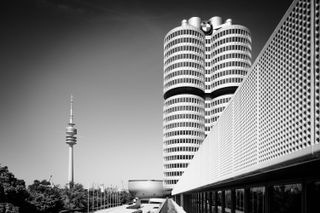
BMW HQ, photographed by Myrzik and Jarisch, with the Olympic Tower in the background
Schwanzer won the 1968 competition for the tower with his cloverleaf-shaped design, said to reference the cylinders of an engine.
Up until this point, the architect was best known for his work building exhibition pavilions – he designed the Austrian Pavilions for the 1958 Brussels World Fair and the 1967 Montreal Expo. The former structure was demounted and repurposed as Vienna’s Museum of the 20th Century.
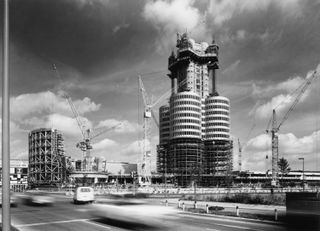
BMW HQ, Munich, under construction
The complex was built between 1970 and 1972, a swift process for such a substantial building. Schwanzer’s design incorporated 3,000 aluminium façade elements, pre-cast using a special Japanese process that hadn’t been used in Europe before.
The construction process was also novel; the central reinforced concrete tower was built first, with ready-clad floors jacked into place from the top downwards.
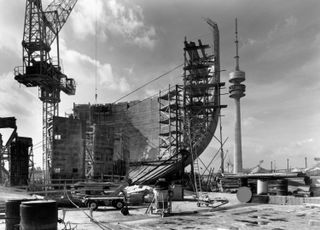
BMW Museum, Munich, under construction
When completed, the curving aluminium façades towered over Munich’s ring road, just across from the city’s Olympic Park, built for the 1972 games and designed by Behnisch & Partner along with the celebrated structural engineer Frei Otto.
Wallpaper* Newsletter
Receive our daily digest of inspiration, escapism and design stories from around the world direct to your inbox
The 101m tower formed a striking backdrop for the Olympic coverage, instantly giving the skyscraper a global audience (even though the Olympic Committee demanded BMW remove its distinctive badges from the top floor).
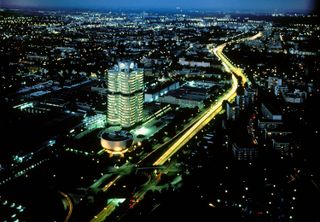
BMW HQ and Museum, Munich
The tower is accompanied by the ‘bowl’ of the BMW Museum, an inverted dome that houses an ever-changing display of the company’s extensive collection, with the famous BMW roundel painted on the roof.
The buildings have since appeared in numerous films, starting with 1975’s Rollerball, when they became the sinister HQ of the Energy Corporation. They also serve as an impressive location for photoshoots – seen here behind the BMW 530e in a shot by Koto Bolofo for Wallpaper* in April 2019.
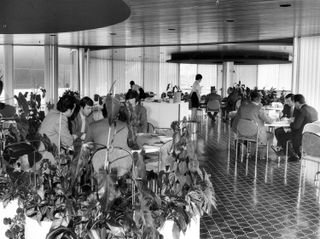
Executive party: BMW HQ shortly after completion
BMW has continued its commitment to high-quality corporate architecture. In 2005, the BMW Central Building in Leipzig was designed by Zaha Hadid Architects, while two years later the BMW Welt opened alongside the Munich HQ, a dramatic piece of deconstructivist design by Coop Himmelb(l)au that serves as an event space and customer centre for the brand.
This year, the company announced a collaboration with OMA and 3XN to explore future development of its main Munich factory.
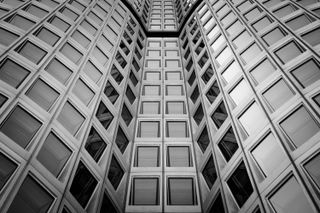


BMW HQ seen from the factory,

An illustration by Christoph Niemann, commissioned by BMW to celebrate the HQ's 50th anniversary
INFORMATION
Jonathan Bell has written for Wallpaper* magazine since 1999, covering everything from architecture and transport design to books, tech and graphic design. He is now the magazine’s Transport and Technology Editor. Jonathan has written and edited 15 books, including Concept Car Design, 21st Century House, and The New Modern House. He is also the host of Wallpaper’s first podcast.
-
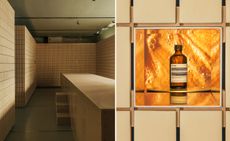 Aesop’s Salone del Mobile 2024 installations in Milan are multisensory experiences
Aesop’s Salone del Mobile 2024 installations in Milan are multisensory experiencesAesop has partnered with Salone del Mobile to launch a series of installations across Milan, tapping into sight, touch, taste, and scent
By Hannah Tindle Published
-
 Dial into the Boring Phone and more smartphone alternatives
Dial into the Boring Phone and more smartphone alternativesFrom the deliberately dull new Boring Phone to Honor’s latest hook-up with Porsche, a host of new devices that do the phone thing slightly differently
By Jonathan Bell Published
-
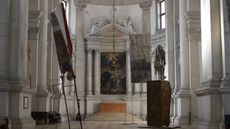 Berlinde De Bruyckere’s angels without faces touch down in Venice church
Berlinde De Bruyckere’s angels without faces touch down in Venice churchBelgian artist Berlinde De Bruyckere’s recent archangel sculptures occupy the 16th-century white marble Abbazia di San Giorgio Maggiore for the Venice Biennale 2024
By Osman Can Yerebakan Published
-
 Modernist architecture: inspiration from across the globe
Modernist architecture: inspiration from across the globeModernist architecture has had a tremendous influence on today’s built environment, making these midcentury marvels some of the most closely studied 20th-century buildings; check back soon for new additions to our list
By Ellie Stathaki Published
-
 Reethaus is a performance space conceived as ‘a place for radical presence’ in Berlin
Reethaus is a performance space conceived as ‘a place for radical presence’ in BerlinReethaus, a newly opened cultural centre in Berlin, kick-starts a fresh era for the city’s growing creative neighbourhood of Flussbad
By Ellie Stathaki Published
-
 Duplex brings two houses together as a single, raw, theatrical home in Leipzig
Duplex brings two houses together as a single, raw, theatrical home in LeipzigDuplex by Atelier ST is a raw and textured family home born of the transformation of two smaller residential buildings in Leipzig, Germany
By Ellen Himelfarb Published
-
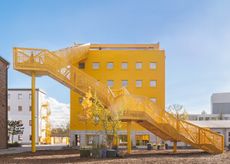 Berlin's Atelier Gardens gets bright yellow focal point within MVRDV masterplan
Berlin's Atelier Gardens gets bright yellow focal point within MVRDV masterplanThe bright yellow HAUS 1 becomes a key addition to Atelier Gardens in Berlin, part of an ever-evolving, sustainable masterplan by MVRDV
By Harriet Thorpe Published
-
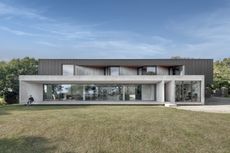 Minimalist architecture: homes that inspire calm
Minimalist architecture: homes that inspire calmThese examples of minimalist architecture place life in the foreground – clutter is demoted; joy promoted
By Ellie Stathaki Published
-
 The finest brutalist architecture in London and beyond
The finest brutalist architecture in London and beyondFor some of the world's finest brutalist architecture in London and beyond, scroll below. Can’t get enough of brutalism? Neither can we.
By Jonathan Bell Published
-
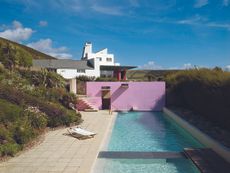 The iconic British house: key examples explored
The iconic British house: key examples exploredNew book ‘The Iconic British House’ by Dominic Bradbury explores the country’s best residential examples since 1900
By Ellie Stathaki Published
-
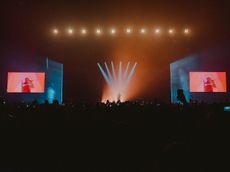 Loyle Carner’s Reading Festival 2023 stage presents spatial storytelling at its finest
Loyle Carner’s Reading Festival 2023 stage presents spatial storytelling at its finestWe talk to Loyle Carner and The Unlimited Dreams Company (UDC) about the musical artist’s stage set design for Reading Festival 2023
By Teshome Douglas-Campbell Published